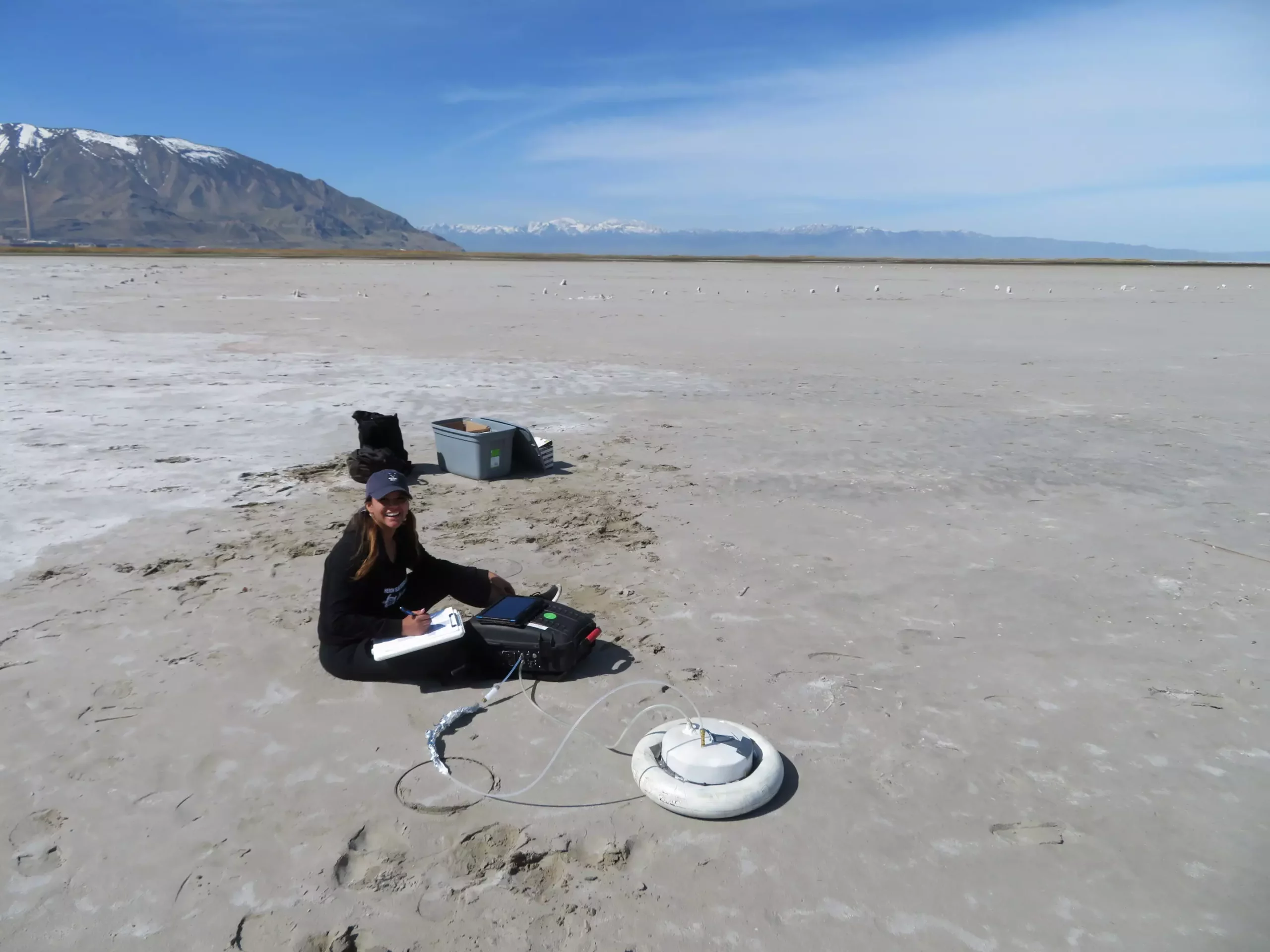The Great Salt Lake serves as a critical ecological and environmental landmark in Utah, yet new research from the Royal Ontario Museum (ROM) reveals a troubling aspect of its declining health. The study calculates that in 2020, the lake’s drying bed emitted a staggering 4.1 million tons of carbon dioxide and other greenhouse gases into the atmosphere. This figure is more than just an alarming statistic; it shines a spotlight on an under-researched element of climate change: the role of drying lake beds as significant greenhouse gas sources. The findings suggest that we may be overlooking a critical driver of climate change, further exacerbated by human activities and natural variabilities that alter regional water levels.
Human Impact: A Double-Edged Sword
The Great Salt Lake’s water levels have fluctuated significantly over the years, generally falling in line with seasonal meltwater influx from the nearby mountains. While some might point to nature’s cyclic rhythms, it is essential to understand that anthropogenic factors are at play. Human-driven water usage, primarily for agriculture, industry, and municipal needs, has led to unprecedented depletion of this vital saline ecosystem. The stark reality is that as we pursue economic growth and modernization, we are concurrent in diminishing the very natural resources that sustain us. Though droughts and climate conditions contribute to the lake’s dearth, humankind’s relentless consumption charts the course for its alarming desiccation.
Unveiling the Hidden Dangers
The study, led by Soren Brothers from ROM, illustrates that the exposed lake bed contributes considerably to atmospheric greenhouse gas emissions—a fact that has been largely marginalized in climate discourse. The significant amount of 4.1 million tons of emissions represents approximately 7% of Utah’s total anthropogenic emissions, pointing to an urgent need for more comprehensive frameworks in managing water resources. The researchers utilized innovative field techniques to measure emissions, essentially monitoring the ecological fallout of human negligence on this natural reservoir.
As a consequence, scientists have discovered that the lake bed is emitting carbon dioxide, with 94% of the gas released being this particular compound. However, methane emissions are even more concerning due to their potency as a greenhouse gas—28 times more powerful than carbon dioxide over a 100-year period. This complicates the climate conversation by reminding us that seemingly small sources of emissions can wield outsized impacts. By examining both carbon dioxide and methane outputs, researchers have uncovered that the entire ecosystem is not merely a passive victim in this ecological tragedy but is actively contributing to the climate crisis.
A Call for Comprehensive Environmental Policies
As the Great Salt Lake continues to dry up, its fate mirrors that of other renowned saline lakes such as the Aral Sea and Lake Urmia. The underlying patterns are disconcerting—diminishing water sources lead to deteriorating habitats, which, in turn, affect air quality and public health. The cascading effects resonate beyond regional boundaries, underscoring a dire need for countries worldwide to reconsider water management strategies and climate mitigation efforts. As researchers argue, neglecting the role of such lake beds in greenhouse gas discharge not only undermines our understanding of climate change but also complicates issues surrounding watershed planning and environmental policymaking.
There is an imperative for deep reflection on our approach to water allocation and ecosystem conservation. This research serves as a clarion call for policymakers to integrate findings like these into frameworks that guide climate action and resource management. The realization that drying lake beds can augment greenhouse gas levels should encourage a rethinking of how we categorize and prioritize ecological factors in our environmental regulations.
Environmental Awareness: Igniting Action for Change
Every year, as the climatic situation worsens, the ramifications of neglecting our ecosystem’s integrity grow more severe. The drying status of Great Salt Lake exemplifies a broader environmental crisis—a cycle of decline driven by human behavior and neglect. As awareness of this issue permeates conversations around climate change, a cultural shift towards embracing sustainable water use could be transformative.
Public consciousness must evolve beyond viewing climate change as solely powered by fossil fuel emissions. The release of greenhouse gases from dehydrated lake beds presents a vital new frontier in our struggle against global warming. Engaging communities, educators, and advocacy groups could play a crucial role in fostering a culture of responsibility, urging all individuals to reconsider their water consumption patterns and their broader environmental impacts.
Our interaction with natural resources defines our legacy and challenges us to find a balance between development and sustainability. Ignoring the connection between drying lakes and escalating greenhouse gas emissions risks unsuccessful climate mitigation strategies, ultimately leading us into an ever-tightening grip of environmental degradation. Embracing a holistic understanding of these dynamics can empower us to forge new pathways toward ecological resilience.


Leave a Reply